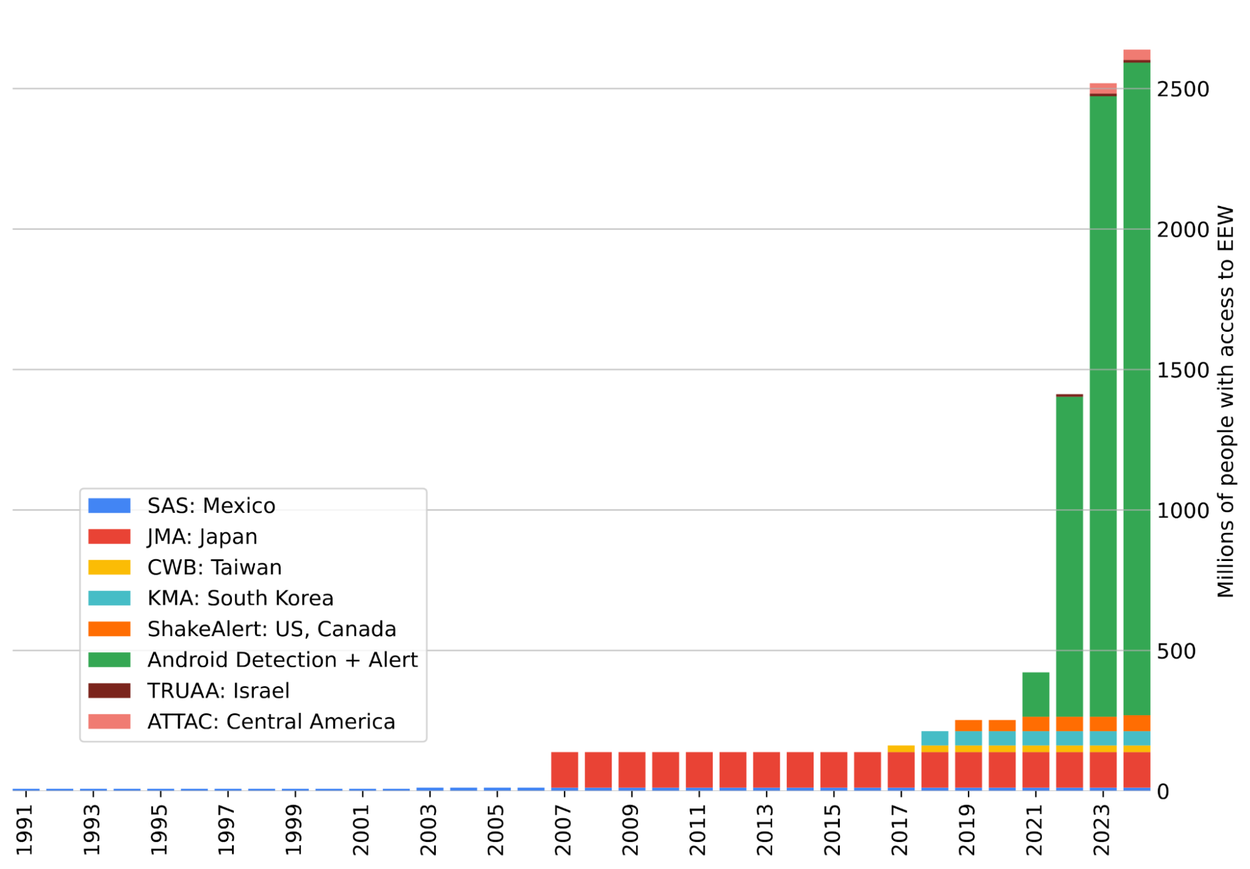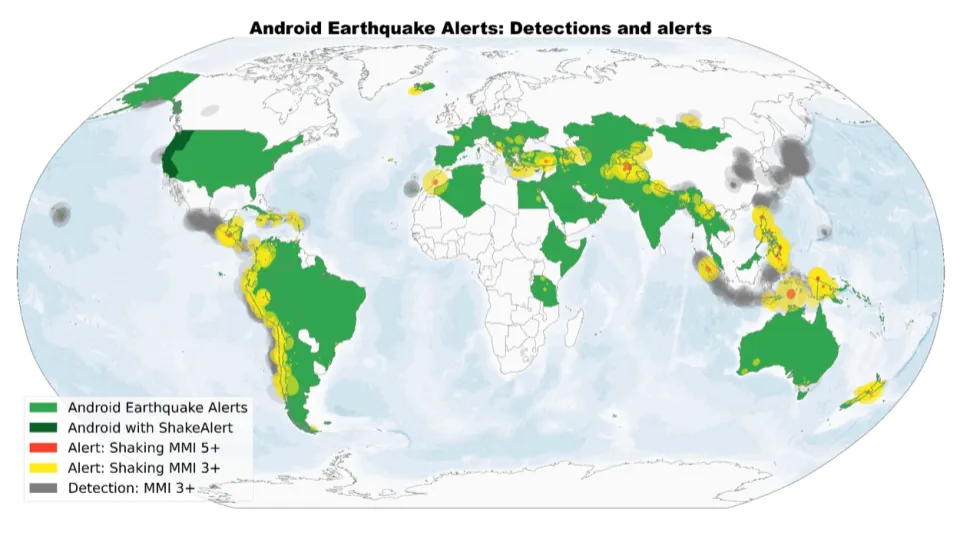Google has developed a global earthquake detection system that uses Android smartphones to detect seismic activity and provide early warnings. Instead of relying on dedicated infrastructure, the system takes advantage of the accelerometers already built into billions of Android phones.
When an Android device is plugged in, stationary, and detects motion resembling a seismic P-wave, it sends an anonymized signal to Google’s servers. If many nearby phones detect the same pattern, the system identifies a likely earthquake, estimates its location and magnitude, and issues alerts to people in the area.
Between 2021 and 2024, this approach was used to detect over 11,000 earthquakes across nearly 100 countries. In many cases, users received alerts 15 to 60 seconds before the shaking started. These results, recently published in the journal Science, show that the system performs comparably to traditional seismic networks—particularly in regions where those networks don’t exist.

Google’s alert system has two levels: “Be Aware” for light shaking and “Take Action” for stronger shaking. These alerts are designed to be simple and fast, giving people a brief moment to react. In the U.S., the system works alongside ShakeAlert. In other countries without national alert systems—such as Indonesia, the Philippines, or Turkey—it provides a stand-alone warning service.
The system’s key advantage is scale. No additional hardware needs to be installed, and the reach of Android devices means even remote or under-resourced areas can benefit. However, there are limitations. Detection is less reliable in regions with low Android phone density, and the system still depends on user trust and timely data processing. Transparency about performance and partnerships with public safety agencies will be important for broader adoption.
This project shows how existing consumer technology can be repurposed to support public safety. While it doesn’t replace traditional seismology networks, it offers a useful additional layer—especially in places where alternatives don’t exist.
Google’s Android Earthquake Alerts System is a practical example of distributed sensing at global scale. With further development, it could significantly expand access to earthquake early warnings worldwide.
source: Google





